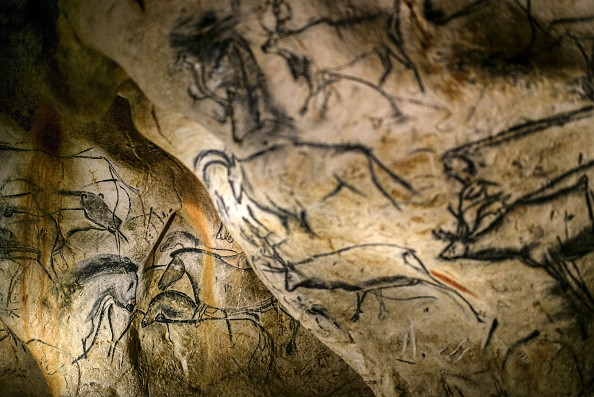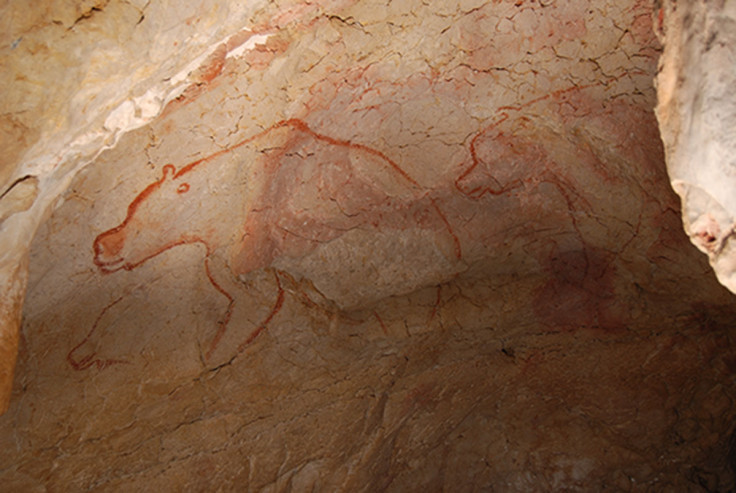Chauvet-Pont d'Arc: 'Cave of forgotten dreams' paintings 10,000 years older than previously thought
Radiocarbon dating in the Chauvet-Pont d'Arc cave, southern France, has revealed a new chronology of human and animal occupation of the site during the Paleolithic era. Classified as a World Heritage site in June 2014, the cave's walls are decorated with some of the oldest prehistoric artworks ever encountered.
Previous analyses had dated the charcoal drawings back to 22,000–18,000 BP. However, the comprehensive dating program carried out in the cave now indicates a much older age (32,000–30,000 BP) for the black drawings, which are the only one in the cave datable with the radiocarbon-dating method. All the results are published in the Proceedings of the National Academy of Sciences.

According to analysis of the absolute dates obtained from the artworks, as well as other data derived from traces of animal and human activity, the cave went through two distinct periods of human occupation: one from 37 to 33,500 years ago, and the other from 31 to 28,000 years ago. Additionally, the scientists found bears also took refuge in the cave until 33,000 years ago.

It is the first time that scientists are able to come up with a chronology of the cave's occupation using time references that everyone can understand. "Before 2009, we were not able to date human occupation in the cave precisely, because we did not know how to convert a given measurement of radiocarbon in a sample into an estimate of the sample's calendar age. This study is the first to date human and animal occupation of the Chauvet cave into actual calendar years," study author Anita Quiles, from the French Institute for Eastern Archaeology, told IBTimes UK.
Challenging art theories
In total, Quiles and her team analysed 250 radiocarbon dates, collected over 15 years. They include analyses of black animal drawings and charcoal marks (including torch marks), but also charcoal and bear bones found on the cave's floor.

Although not all the artworks in the cave have been analysed, radiocarbon dating from the black charcoal drawings reveal that most were probably created during the first phase of human occupation, between 37,000 to 33,500 years ago. These findings challenge traditional beliefs about parietal art. Indeed, experts were surprised that our human ancestors were able to create such rich and detailed frescoes, so far back in the past.
"Now, we understand that even at this time, humans were capable of creating such magnificent and elaborate artworks. The drawings are full of dynamism, they reflect a real desire to transmit something to an audience," Quiles says.
No bears with the humans

The study of the bears' bones samples suggests an overlap between their occupation of the cave and that of the first humans who passed through Chauvet. However, the probability that they crossed paths is low, because ancient humans would probably not have entered the territory of such a dangerous animal. Dating conducted in the cave does not allow researchers to know how long the humans used the cave for, but it is also probable that they did not use it continuously during their first and second phase of occupation.
© Copyright IBTimes 2025. All rights reserved.






















